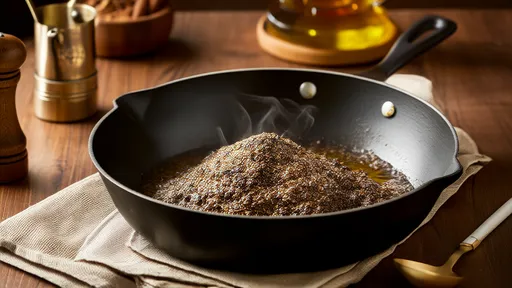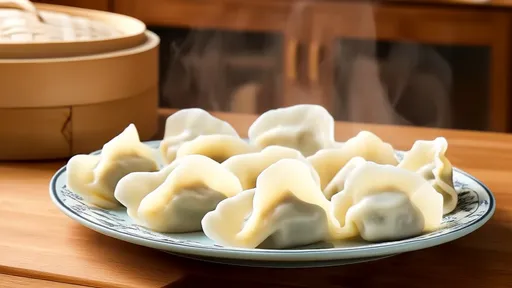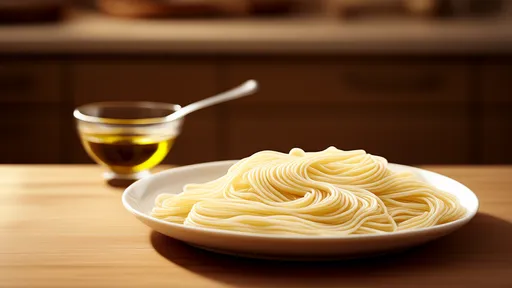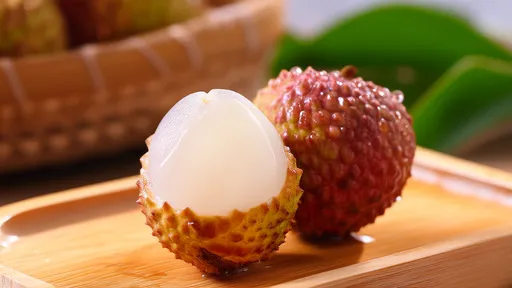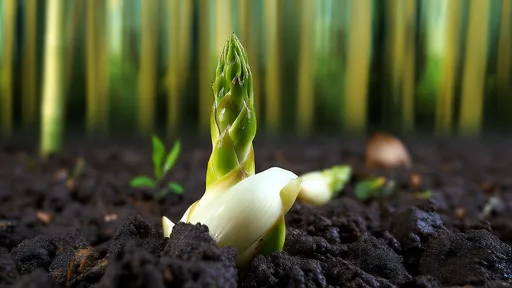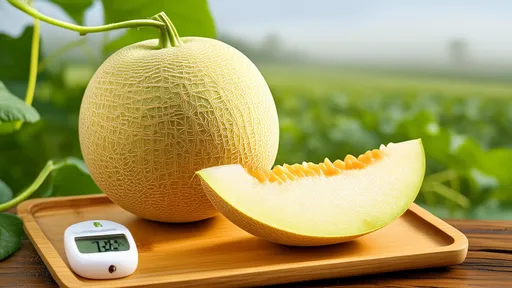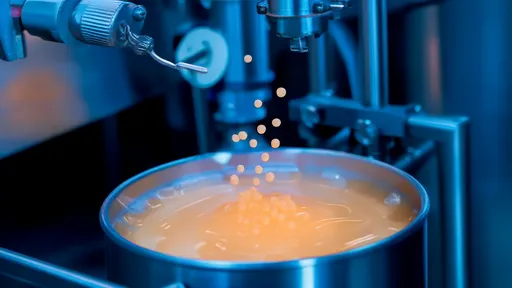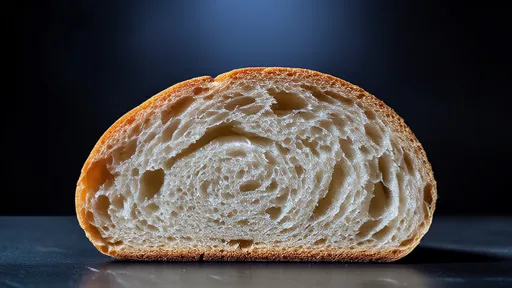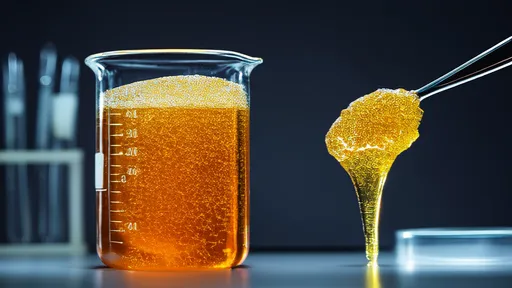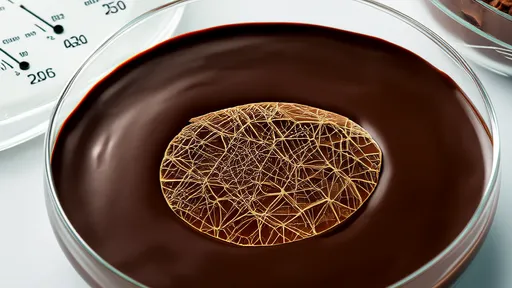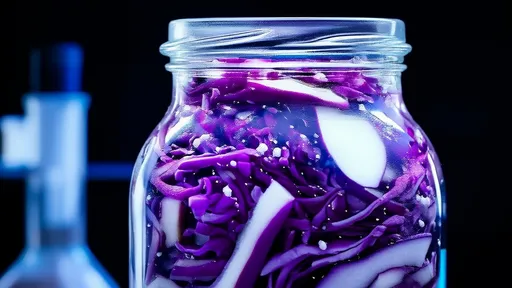In kitchens around the world, cooks face a common nemesis when preparing pasta: sticky noodles that clump together into an unappetizing mass. While many swear by the traditional method of rinsing cooked pasta with cold water to prevent sticking, a growing number of culinary experts argue that tossing freshly boiled noodles with olive oil proves far more effective. This technique not only preserves the pasta's ideal texture but also enhances its flavor profile in ways cold water simply cannot match.
The science behind sticky pasta boils down to starch. When noodles cook, they release amylose and amylopectin – two types of starch molecules that create a gluey surface as they cool. Cold water rinsing temporarily stops this process by rapidly lowering the pasta's temperature, but it comes with significant drawbacks. The shock of cold water washes away valuable surface starches that help sauce adhere to noodles, while also altering the pasta's carefully developed texture from its brief dance in boiling water.
Olive oil presents an elegant solution to this culinary conundrum. When lightly coated over freshly drained pasta, the oil creates a microscopic barrier between noodle surfaces. This thin film prevents individual strands from bonding together while maintaining the starch layer that's crucial for sauce absorption. Unlike water that evaporates quickly, the oil persists long enough to keep noodles separated until serving time. The choice of olive oil proves particularly advantageous as its subtle fruitiness complements rather than competes with most pasta sauces.
Professional chefs have quietly employed this technique for decades in high-volume kitchens where pasta must remain perfect for hours before service. The oil method allows cooked noodles to hold at ideal temperatures without constant attention, as the protective coating slows both sticking and moisture loss. This explains why you'll rarely see Italian nonnas shocking their handmade pasta with cold water – they understand that oil preserves both texture and tradition.
Beyond functionality, the olive oil approach enhances pasta's sensory qualities. The oil's viscosity helps distribute seasonings evenly across every strand, while its inherent richness provides a luxurious mouthfeel that water cannot offer. When the pasta eventually meets its sauce, this preliminary oil coating actually improves emulsification, helping create that restaurant-quality cohesion between noodles and dressing that home cooks often struggle to achieve.
Critics of the oil method sometimes argue it prevents sauce from sticking – a misconception rooted in using excessive amounts. The key lies in moderation; merely one teaspoon per pound of pasta creates sufficient separation without creating a slick surface. This measured approach maintains the starch's sauce-grabbing properties while eliminating clumping, offering the best of both worlds. Unlike water that dilutes flavor, the oil's subtle notes become part of the dish's flavor architecture.
Temperature plays a crucial role in this technique's success. The oil should meet the pasta the moment it leaves the boiling water, when residual heat helps distribute the coating evenly. This timing allows the oil to penetrate slightly into the noodle's porous surface, creating a more effective barrier than surface-level application could achieve. The result is pasta that remains perfectly separated whether served immediately or held for later use.
For those concerned about calories, the math proves reassuring. The negligible amount of oil required – about 40 calories per serving – pales in comparison to what's typically added through cheese or cream-based sauces. This makes the oil method suitable even for health-conscious diners, especially when using high-quality extra virgin olive oil with its beneficial monounsaturated fats and antioxidants.
Practical experimentation demonstrates olive oil's superiority convincingly. Side-by-side comparisons reveal oil-treated pasta maintains better texture over time, with strands that separate easily even after resting. The cold-water approach often yields noodles that eventually stick together as the moisture evaporates, requiring additional oil or sauce to rescue them. In professional taste tests, oil-finished pasta consistently receives higher marks for mouthfeel and sauce adherence.
This technique adapts beautifully to various pasta shapes and cooking methods. Long strands like spaghetti benefit particularly from the oil's separating power, while stuffed pastas like ravioli gain protection against tearing during handling. Even for pasta salads destined for refrigeration, a light oil coating prevents clumping better than rinsing, while avoiding the unpleasant waterlogged texture cold water can impart.
The olive oil method aligns with broader culinary wisdom about fat's role in cooking. Just as chefs use butter to finish sauces or oil to coat vegetables before roasting, the strategic use of fat with pasta solves multiple problems simultaneously. It's a technique that respects ingredients while solving practical challenges – the hallmark of truly effective kitchen wisdom passed down through generations of cooks who prioritized results over rigid rules.
As home cooks continue elevating their culinary skills, abandoning outdated practices in favor of techniques that deliver superior results becomes essential. The choice between cold water and olive oil for preventing sticky pasta represents more than preference – it reflects an understanding of food science and respect for ingredients. In this case, the Mediterranean tradition of using olive oil proves its worth yet again, offering a simple solution that improves both the process and the plate.
The art of unlocking the full potential of spices lies in a time-honored technique: dry-roasting, crushing, and coaxing out their essential oils. This ancient method, passed down through generations of culinary masters, transforms ordinary spices into aromatic powerhouses that elevate dishes to extraordinary heights. The process may seem simple at first glance, but mastering it requires patience, precision, and an understanding of how heat interacts with different spice varieties.
For many home cooks and professional chefs, peeling and cutting yams can be an unexpectedly unpleasant experience. The vegetable, known for its nutritional benefits and culinary versatility, has a notorious side effect – it can leave your hands unbearably itchy. This common kitchen woe has led to numerous home remedies and old wives' tales, but one surprising solution has emerged from modern technology: the microwave.
The art of making dumplings is a cherished tradition in many cultures, particularly in Chinese cuisine. While the filling often steals the spotlight, the dough wrapper plays an equally crucial role in ensuring the dumplings hold together during cooking. One of the most effective yet underrated techniques for preventing dumpling wrappers from tearing is incorporating egg whites into the dough. This method leverages the science of proteins to create a more resilient and elastic wrapper, capable of withstanding the rigors of boiling or steaming without falling apart.
In kitchens around the world, cooks face a common nemesis when preparing pasta: sticky noodles that clump together into an unappetizing mass. While many swear by the traditional method of rinsing cooked pasta with cold water to prevent sticking, a growing number of culinary experts argue that tossing freshly boiled noodles with olive oil proves far more effective. This technique not only preserves the pasta's ideal texture but also enhances its flavor profile in ways cold water simply cannot match.
Guangdong lychee, a jewel of southern China's fruit basket, has long been celebrated for its succulent flesh and floral aroma. Beyond its irresistible taste, recent research has uncovered a hidden treasure within its vibrant red peel—polyphenols with remarkable antioxidant properties. These compounds are quietly revolutionizing our understanding of how this tropical fruit may contribute to human health far beyond basic nutrition.
The high-altitude coffee farms of Yunnan Province have long been celebrated for producing beans with a distinctive flavor profile. Among the many factors influencing taste, altitude plays a particularly crucial role, especially when it comes to acidity. Unlike the bright, sharp acidity often associated with African coffees, Yunnan’s beans exhibit a more nuanced relationship between elevation and tartness—one that defies simple expectations.
The tender crunch of Zhejiang bamboo shoots has long captivated gourmets and scientists alike, their delicate texture standing as a testament to nature's perfect engineering. While chefs praise their culinary versatility, researchers have uncovered a fascinating cellular secret behind their remarkable freshness – turgor pressure. This biological phenomenon, often overlooked in discussions of vegetable quality, holds the key to understanding why these spring delicacies from China's eastern province maintain their youthful crispness long after harvest.
The Hami melon, a jewel of Xinjiang's agricultural bounty, owes its legendary sweetness to a climatic phenomenon as ancient as the Silk Road itself. Nestled in the arid embrace of China's northwest, this golden-fleshed fruit has thrived for centuries under skies that scorch by day and chill by night. What appears as hardship to most crops becomes the secret alchemy transforming ordinary melons into saccharine masterpieces.
The vast fields of Northeast China, stretching across latitudes from 40°N to 50°N, have long been celebrated as the heartland of soybean production. Among the many factors influencing soybean quality, protein content stands out as a critical metric, not just for nutritional value but also for industrial applications. Recent studies have unveiled a fascinating pattern: the protein content in Northeast soybeans exhibits significant variation along latitudinal gradients. This discovery has sparked renewed interest in understanding how geography shapes the very fabric of this agricultural staple.
The process of homogenization in ice cream mix preparation plays a pivotal role in achieving the desired texture, stability, and mouthfeel of the final product. At the heart of this process lies the principle of fat emulsification, where milk fat globules are broken down into smaller, more uniform particles. This not only enhances the emulsion's stability but also ensures a smoother consistency in the ice cream. The science behind homogenization parameters is both intricate and fascinating, as it directly influences the quality of the end product.
The phenomenon of bread staling has puzzled bakers and food scientists for generations. While most consumers associate staleness with dryness, the underlying mechanisms involve complex interactions between starch retrogradation and water migration within the bread matrix. This intricate dance between moisture and crystalline structures ultimately determines whether your morning toast will delight or disappoint.
The formation of rock sugar crystals is a fascinating interplay of chemistry and physics, where the delicate balance of supersaturation dictates the birth and growth of crystalline structures. At its core, this process hinges on the creation of nucleation sites—tiny clusters of molecules that serve as the foundation for larger crystals. The journey from syrup to shimmering rock sugar is anything but straightforward, and understanding the factors that influence nucleation can unlock greater control over crystal size, clarity, and yield.
The art of chocolate tempering is a delicate dance of temperature control, one that hinges on the precise crystallization of cocoa butter. This process is not merely a technical step in chocolate production; it is the very heart of what gives chocolate its signature snap, glossy sheen, and melt-in-the-mouth texture. Without proper tempering, chocolate can appear dull, develop a grainy texture, or fail to release cleanly from molds. The secret lies in understanding how cocoa butter behaves under varying thermal conditions.
The science behind pickling vegetables has fascinated food chemists and home cooks alike for centuries. While the process may seem straightforward – submerging vegetables in brine – the molecular dance occurring within each cell reveals a complex interplay of chemistry and physics. Recent advances in sodium ion detection techniques have allowed researchers to map the distribution of salt throughout pickled vegetables with unprecedented precision, shedding new light on this ancient preservation method.
The phenomenon of "wine legs" or "tears of wine" has captivated drinkers and scientists alike for centuries. When a glass of wine or spirit is swirled, droplets form on the inside of the glass, creating mesmerizing streaks that slowly trickle back down. This elegant display isn’t just a sign of a good drink—it’s a fascinating interplay of fluid dynamics, surface tension, and evaporation.
